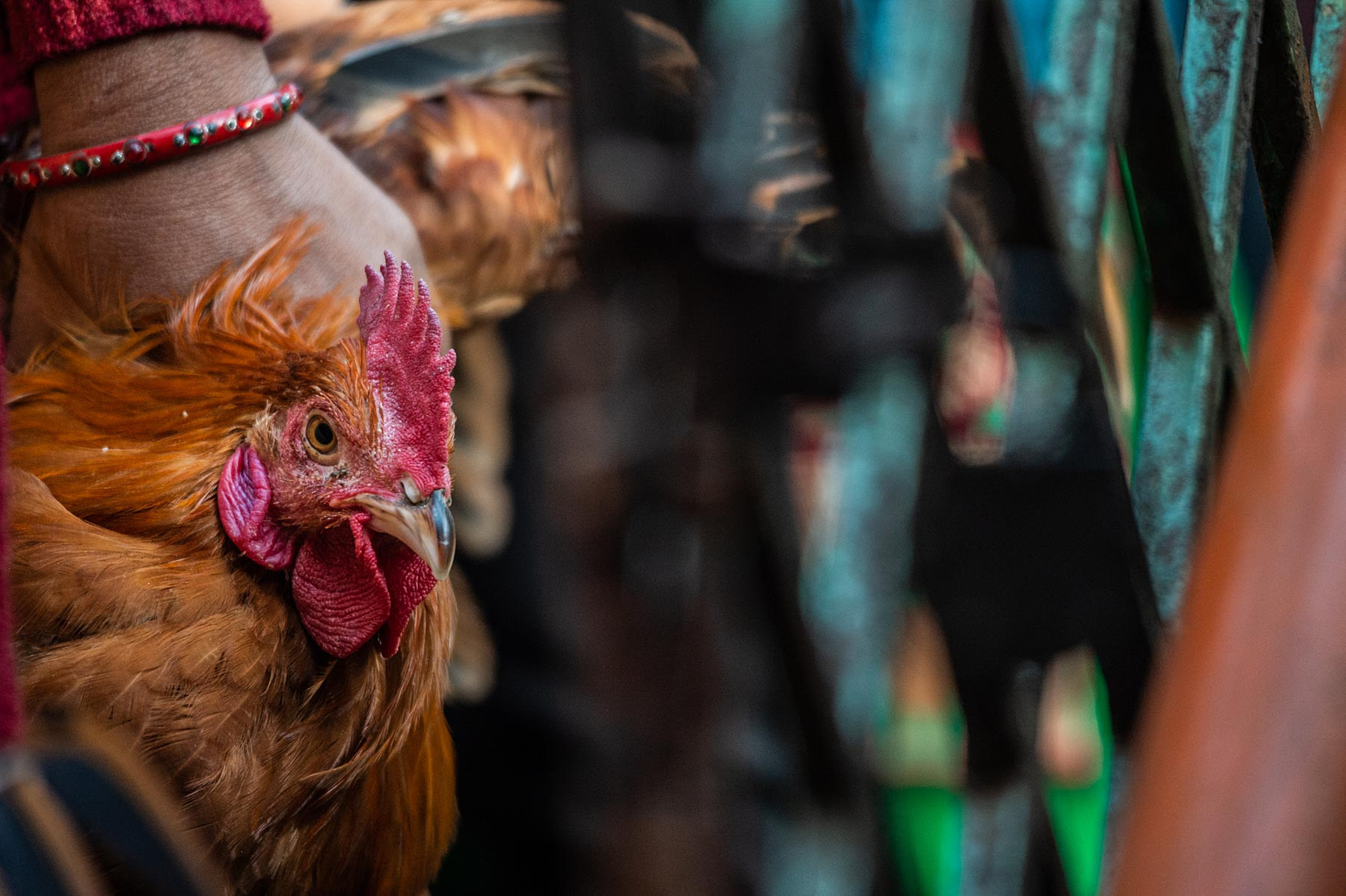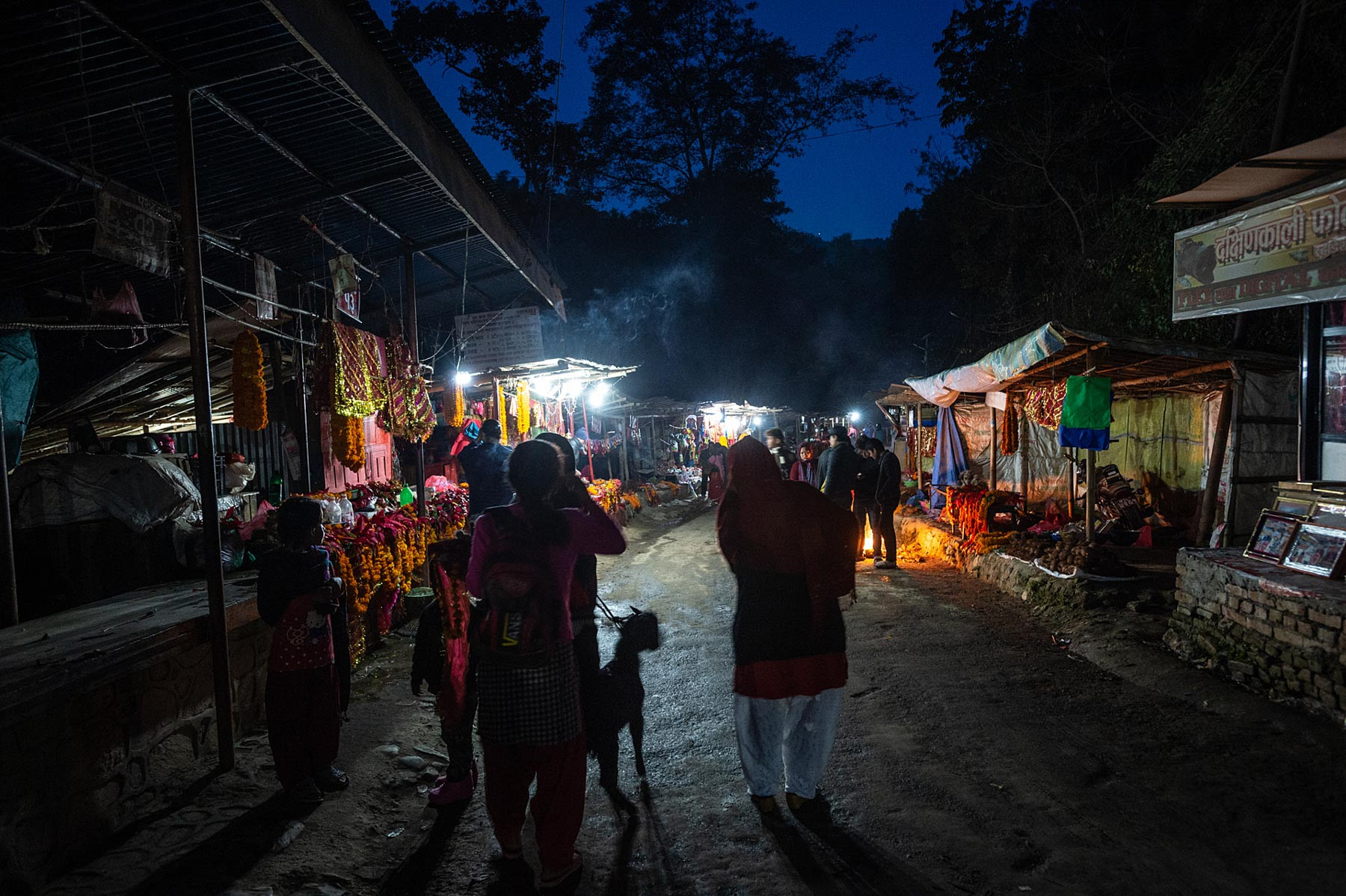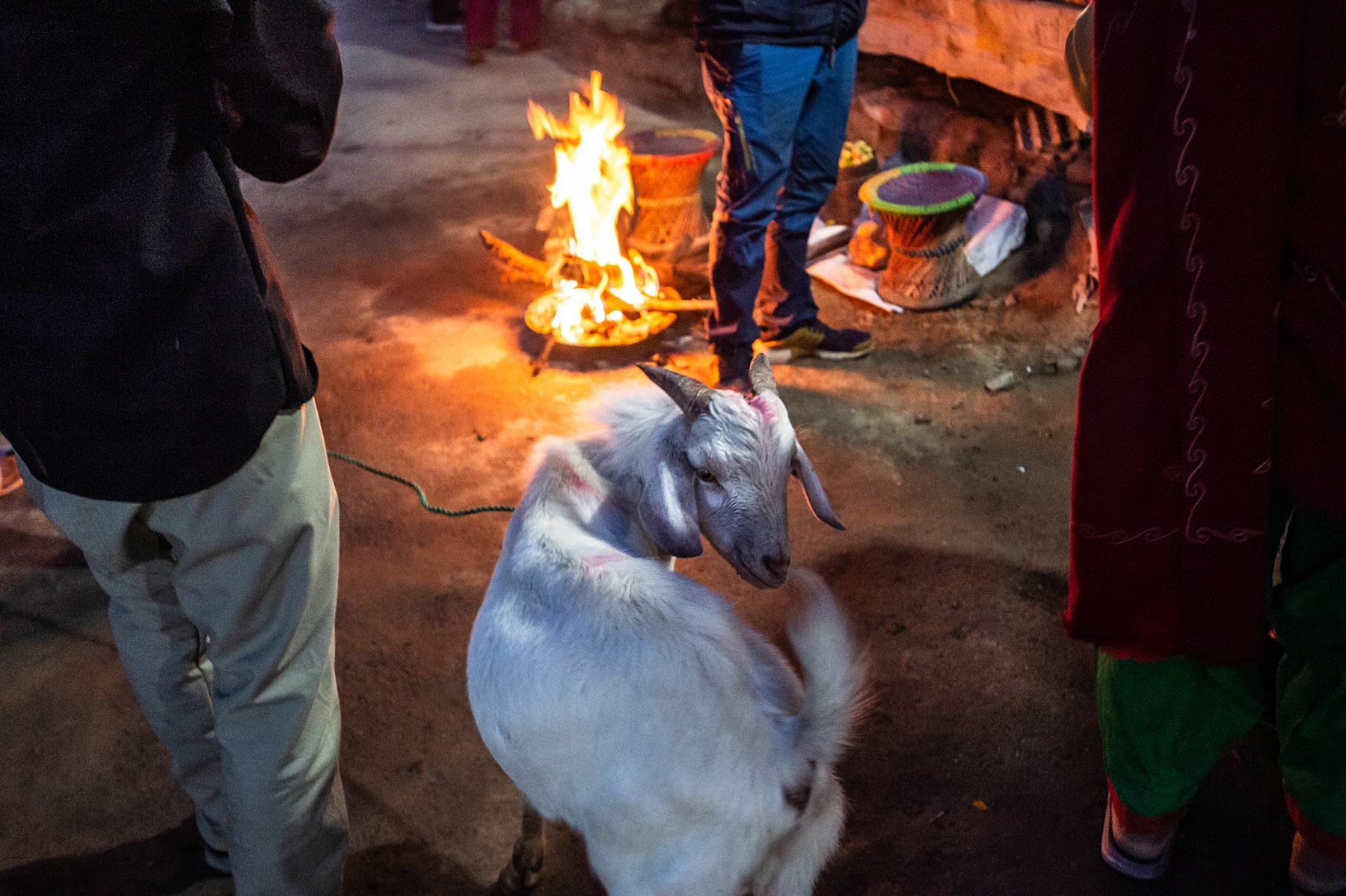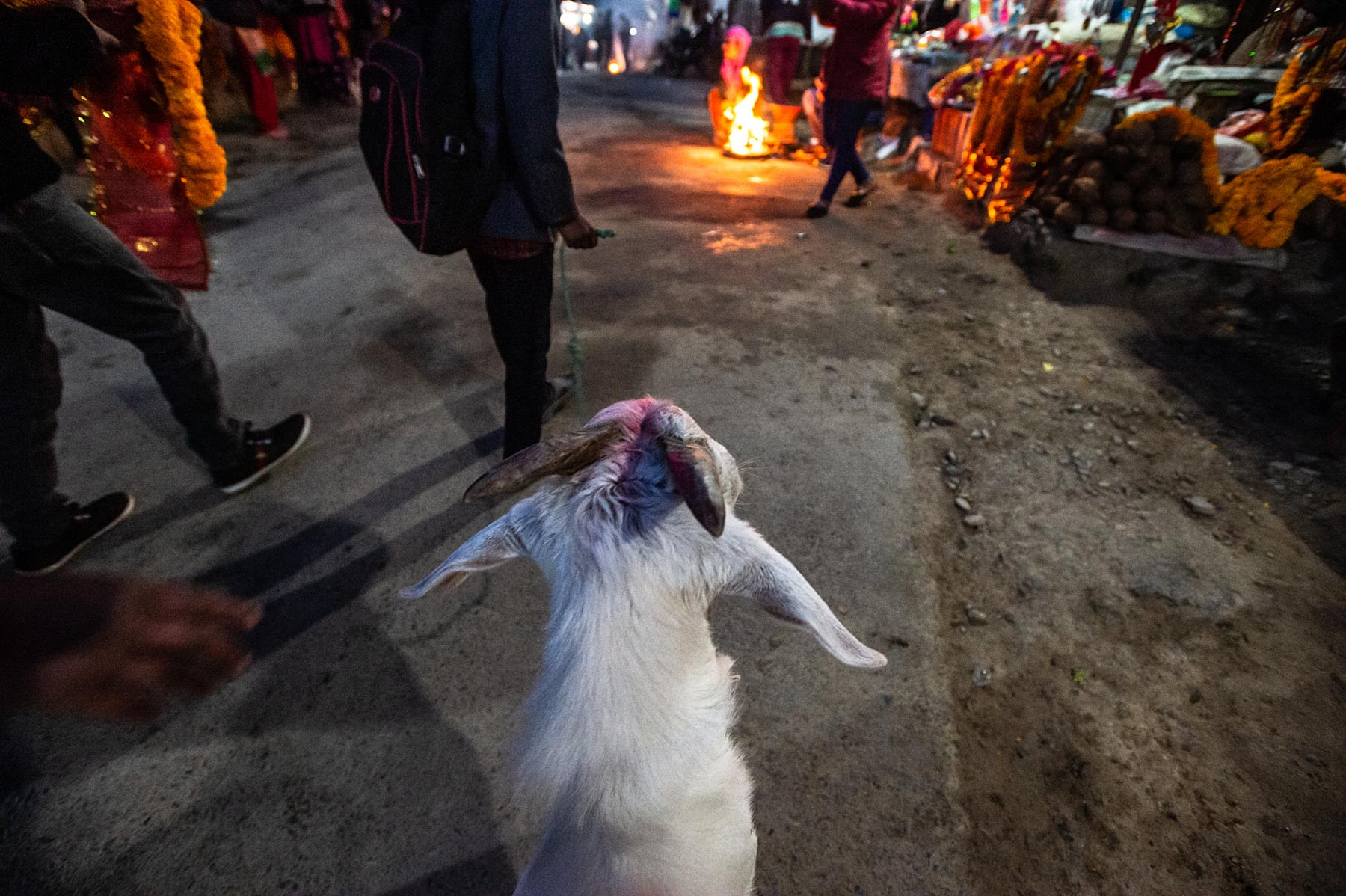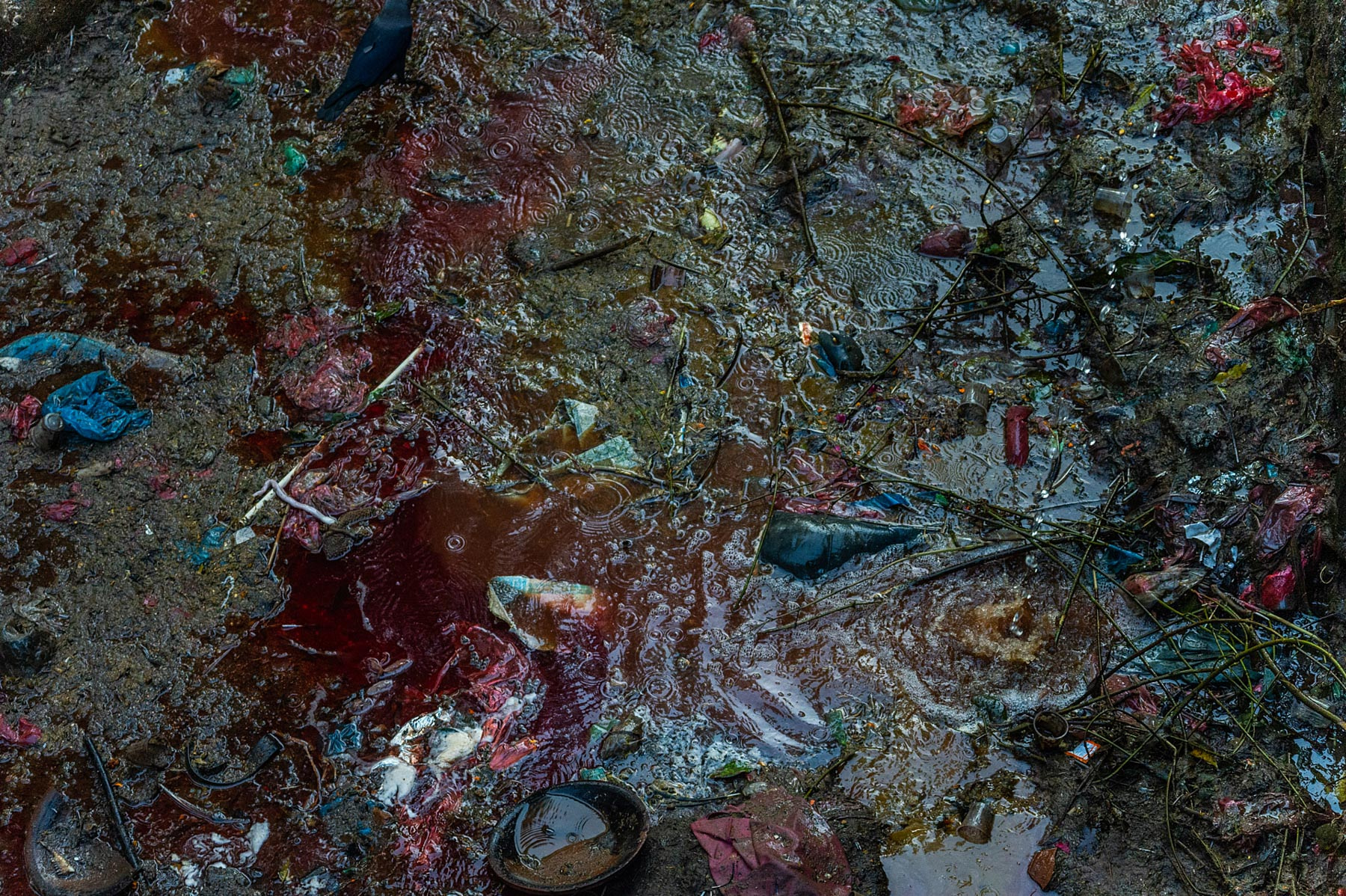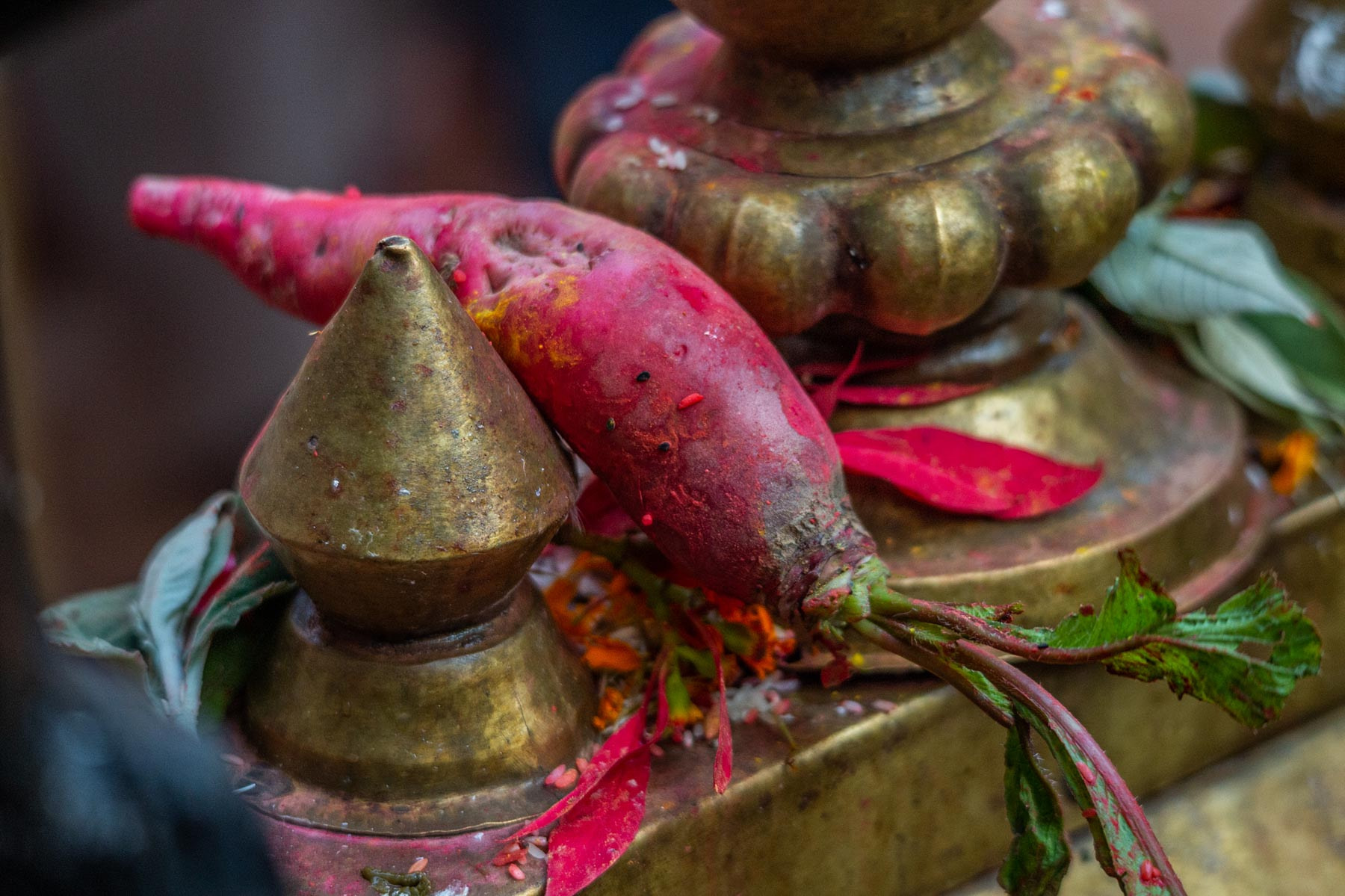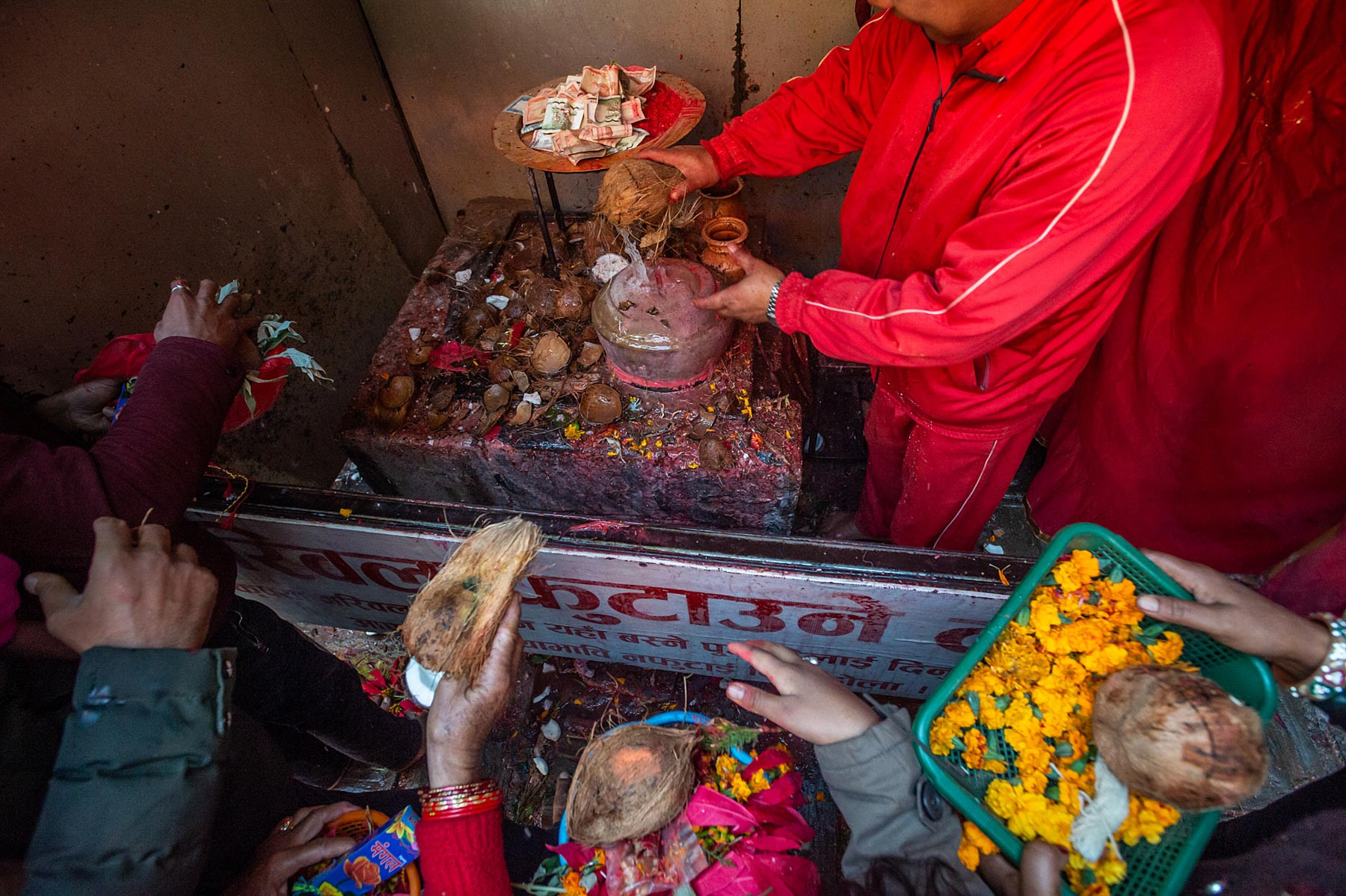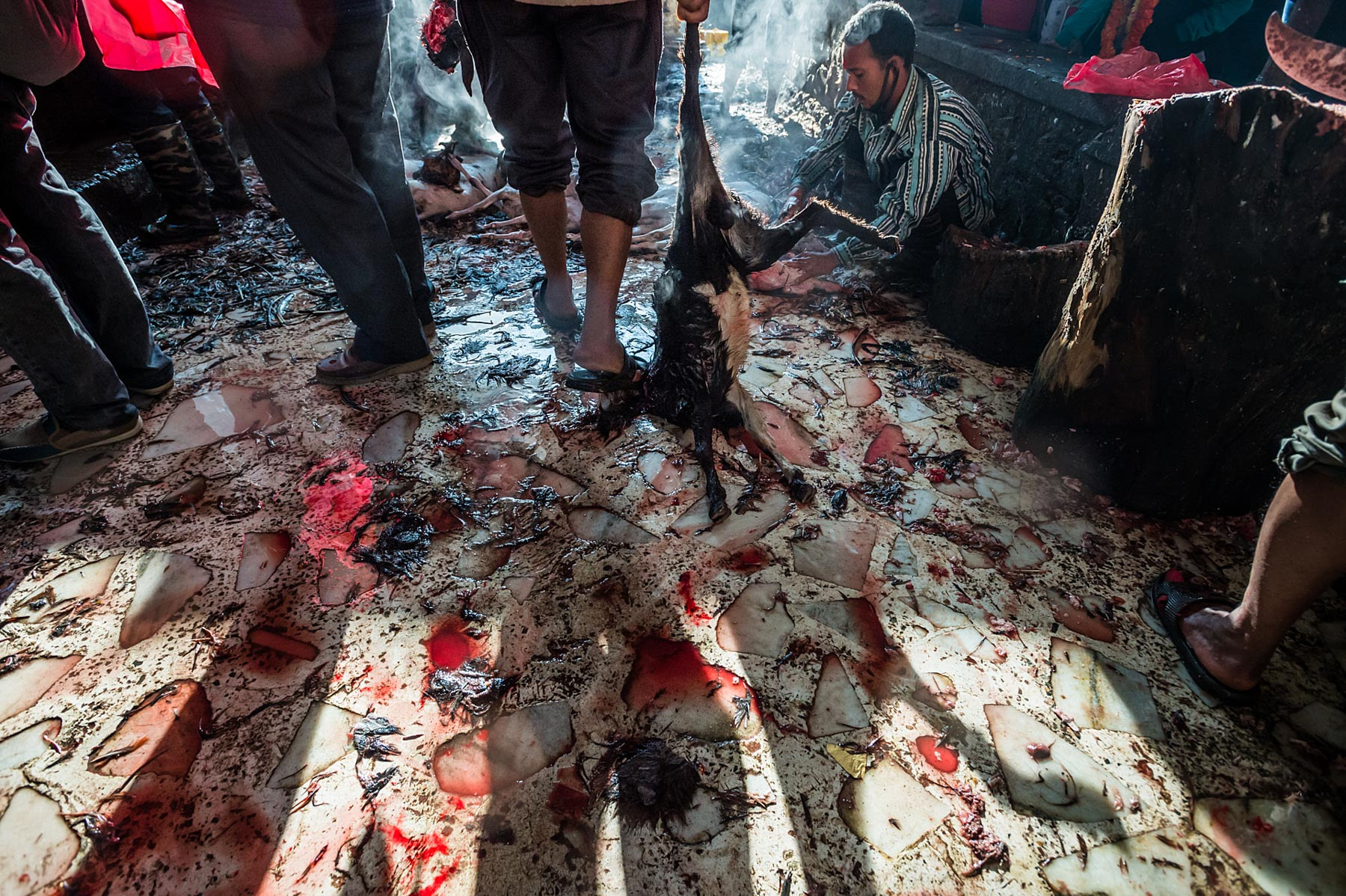A rooster who has been sacrificed at the temple. Dakshinkali Temple, Nepal, 2017.
Jo-Anne McArthur / We Animals
[Content warning: Contains confronting images and/or video footage]
Twice a week the Hindu temple Dakshinkali, located outside of Kathmandu in Nepal, is opened to people wishing to make offerings to the goddess Kali, which often takes the form of animal sacrifice. Animals are butchered on site and families take their meat home to cook and eat.
Around Dakshinkali Temple outside of Kathmandu, hundreds of candles burn and incense smoke billows through the dawn light. It’s 5 a.m. and already, a line of people stretches into the dark.
Their faces are lit into shadowy smiles by the candlelight. It’s cold and it’s early and some of them have travelled for hours, but there’s a feeling of happiness bubbling from the people waiting.
They’re carrying chickens and leading goats – or dragging the ones who won’t walk.
They’re bringing them to be sacrificed.
A chicken in line for slaughter at the temple. Dakshinkali Temple, Nepal, 2017.
Jo-Anne McArthur / We Animals
On the way into the temple, a laneway of stalls sells flower chains, incense, fruit, and toys for the children. It’s stunning and colourful, even in the faded light before sunrise.
People warming themselves in the early morning hours on the road to Dakshinkali temple. Dakshinkali Temple, Nepal, 2017.
Jo-Anne McArthur / We Animals
The stalls also sell chickens and goats for those families who did not bring their own. The chickens’ feet are tied to the tops of crates with twist ties, the goats tethered to the sides of the stalls.
We walk past families buying animals and going on to wait with them in line – moving slowly closer to the smells of blood and butchering.










Lined up for a hundred metres behind the temple’s entrance, people carry chains of marigolds strung together and boxes of incense. Honestly, the scene is breathtaking, beautiful.






But the smell of burning flesh fills the air and there’s blood pooled on the cold stones.




It’s brutal, but there’s an air of celebration and solemn reverence for the lives being sacrificed. Everyone I walk by smiles at me, even though I’m so clearly out of place.
“We have to cut the animals to make our wishes come true,” he says.
“Yes!” He nods emphatically. And then he pauses. “But maybe in the future, it will be nicer and we won’t have to kill the animals.” He tells me that some people bring coconuts to be sacrificed instead. “For if you are vegetarian,” he explains.
Vegetarians and other people who do not believe in animal sacrifice leave vegetables and coconuts at the temple as an offering to the gods. Dakshinkali Temple, Nepal, 2017.
Jo-Anne McArthur / We Animals
At a small hut behind the temple, butchers accept the newly-killed animals’ bodies, eviscerating them and throwing them in huge, scalding bins of water to loosen their fur and feathers.






The smell grows stronger as the sun rises and the day warms. The butchers hand temple-goers back their animals in plastic grocery bags. They’re meat now, cleaned, boiled and chopped.
Men and women wade back out of the crowd at the butcher’s station and grab their tired but excited children by the hand.
It’s time to go home.
The sun is rising behind him and it feels like too obvious an image of beauty and death, mixed together in this beautiful, solemn place where many have celebrated, and many others have died before the day has even begun.
Visit our Ceremony & Religious Use gallery to view and download these images (and more) or search specific keywords to get the visuals you need.



